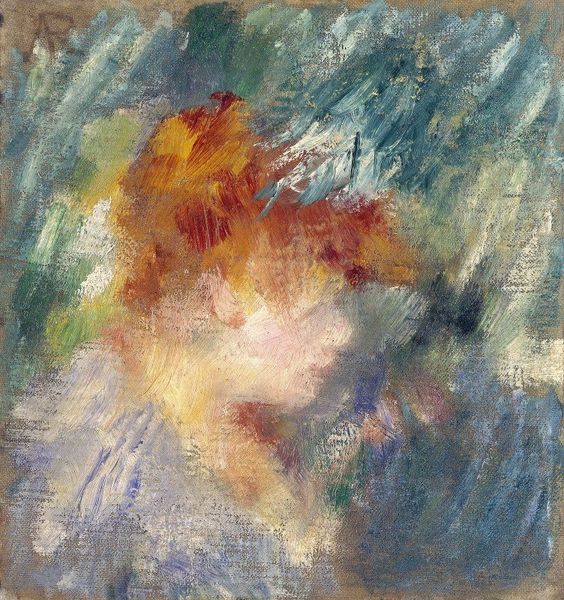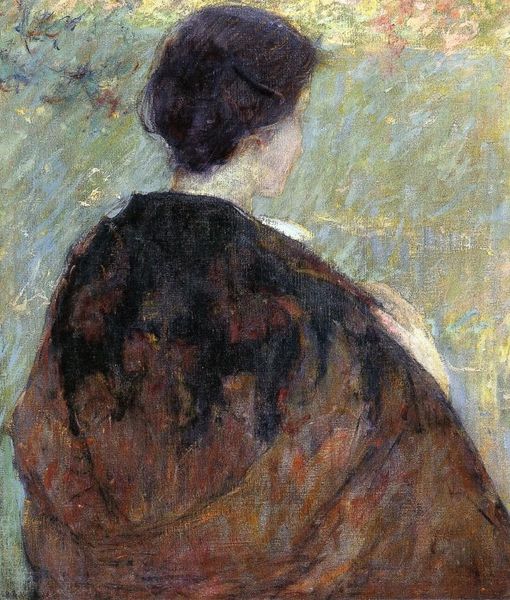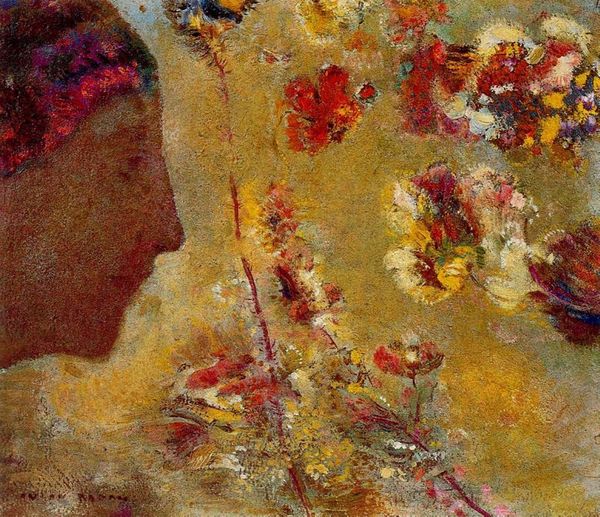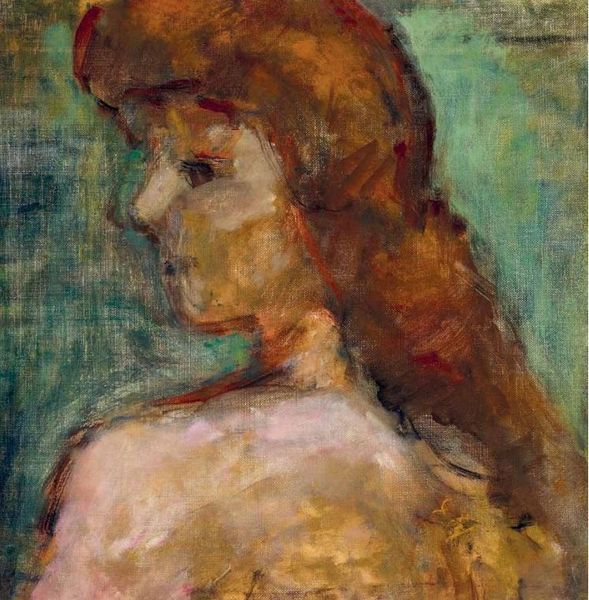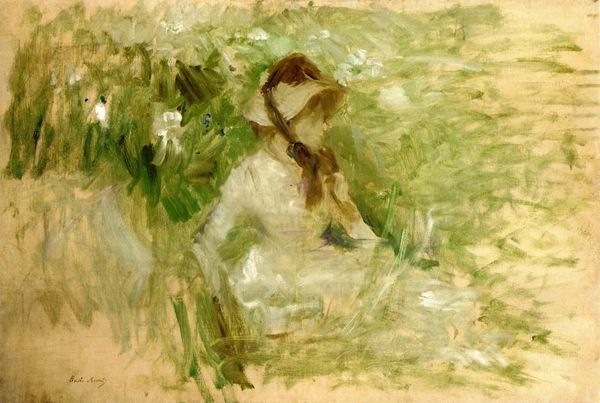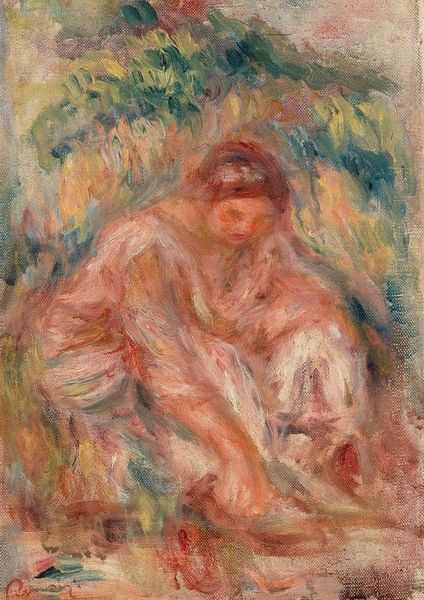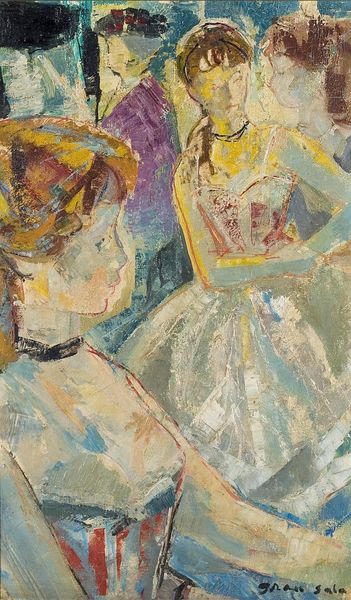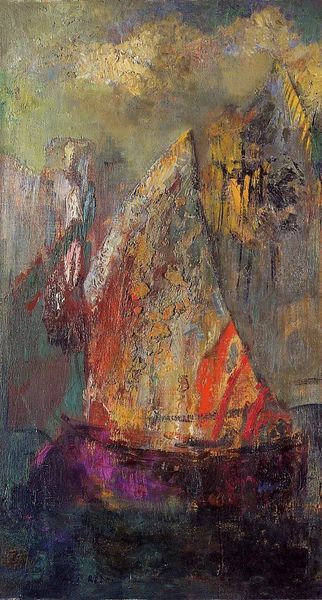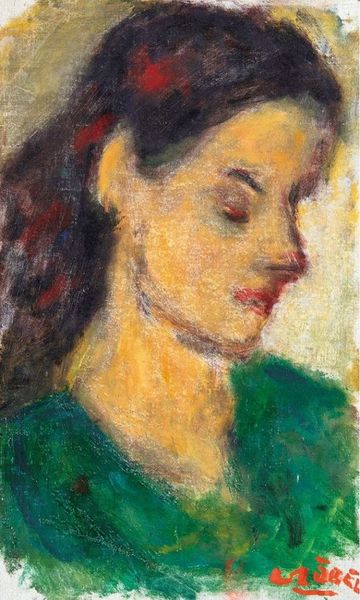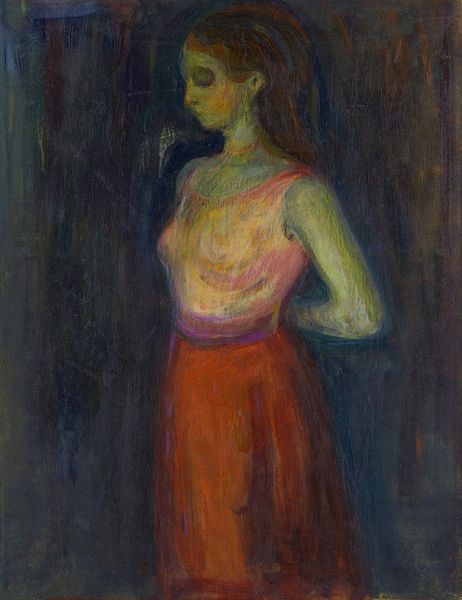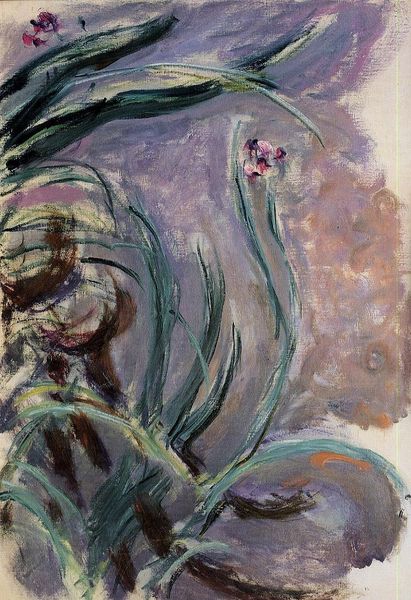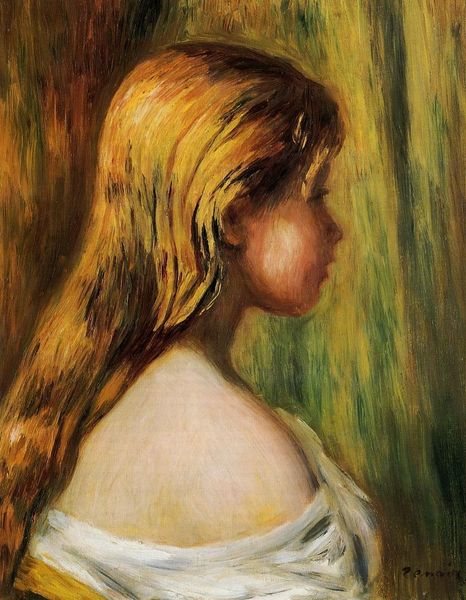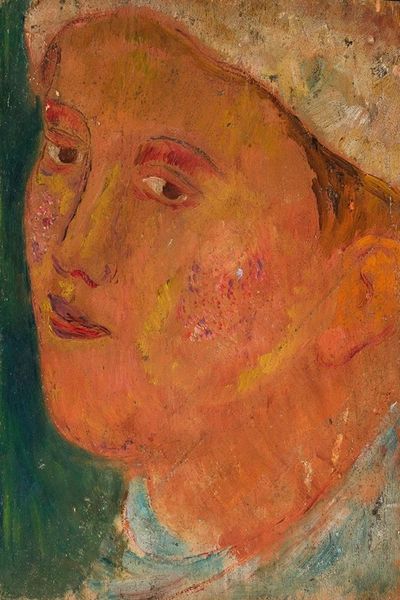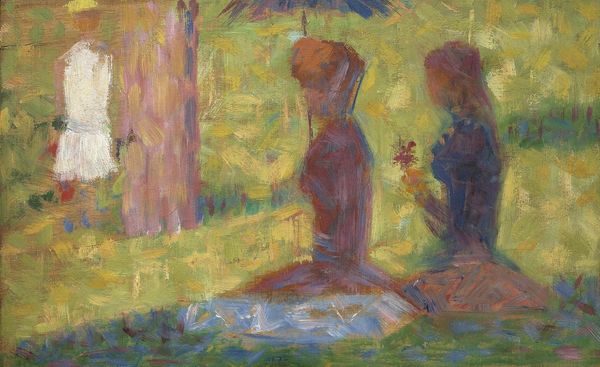
painting, oil-paint
#
portrait
#
figurative
#
abstract painting
#
painting
#
oil-paint
#
possibly oil pastel
#
oil painting
#
expressionism
#
painting painterly
#
modernism
Copyright: Public Domain: Artvee
Curator: This is Arnold Peter Weisz-Kubínčan’s "Head of a Woman in Profile," an oil painting created around 1930. Editor: Wow, she feels melancholy. It’s like a memory fading at the edges, impressionistic but somehow also intensely personal. I almost feel voyeuristic looking at such a vulnerable moment. Curator: The use of visible brushstrokes and layered colours evokes the emotional tenor of Expressionism, reflecting the Modernist emphasis on subjective experience, in addition to psychological realism, this painting shows influences of its own historical context, like interwar anxieties regarding female identity. Editor: You know, the blurred details around her – are those flowers, maybe? – make her almost ethereal, as if she were emerging from nature herself. I bet she had a favourite spot, perhaps on the edge of a sunlit field. Curator: Interesting! Considering broader questions around visual representation, the work is about gendered experience in relation to broader aesthetic values of art. The loose handling of form allows the gaze to move across surface values—do you get a feeling of agency or a feeling of erasure from her posture? Editor: Hmm… Erasure feels too strong. The downward tilt of her head could express shyness, introspection or some other interior focus – what exactly are we not seeing, and how do such 'invisibilities' construct not just her representation but perhaps the limited opportunities afforded women, say, post-WWI. Curator: I like the direction your thoughts are heading. In those tumultuous post-war times, with changing gender roles and identities, her look conveys not only vulnerability, but also resilience and an internal strength amidst cultural pressures. Editor: Absolutely, those aren't necessarily either-or categories. Okay, so tell me more: politically and culturally, who do you imagine Weisz-Kubínčan saw as his audience in depicting the subject in this way, considering his personal artistic and social position? What expectations did he have of the audience? Curator: Considering he was working during the Interwar, Central-European historical period, there are nuances in play. It speaks, on the one hand, to themes relevant across Europe that sought a fresh perspective into portraiture traditions—however, other interpretations can read Weisz-Kubínčan’s painting in relation to broader dynamics and anxieties of identity and visibility. Editor: This has certainly made me think beyond just what’s on the surface of this canvas. The blurred and the visible combine to create a feeling rather than a fixed idea, if that makes any sense! Curator: It does.
Comments
No comments
Be the first to comment and join the conversation on the ultimate creative platform.
